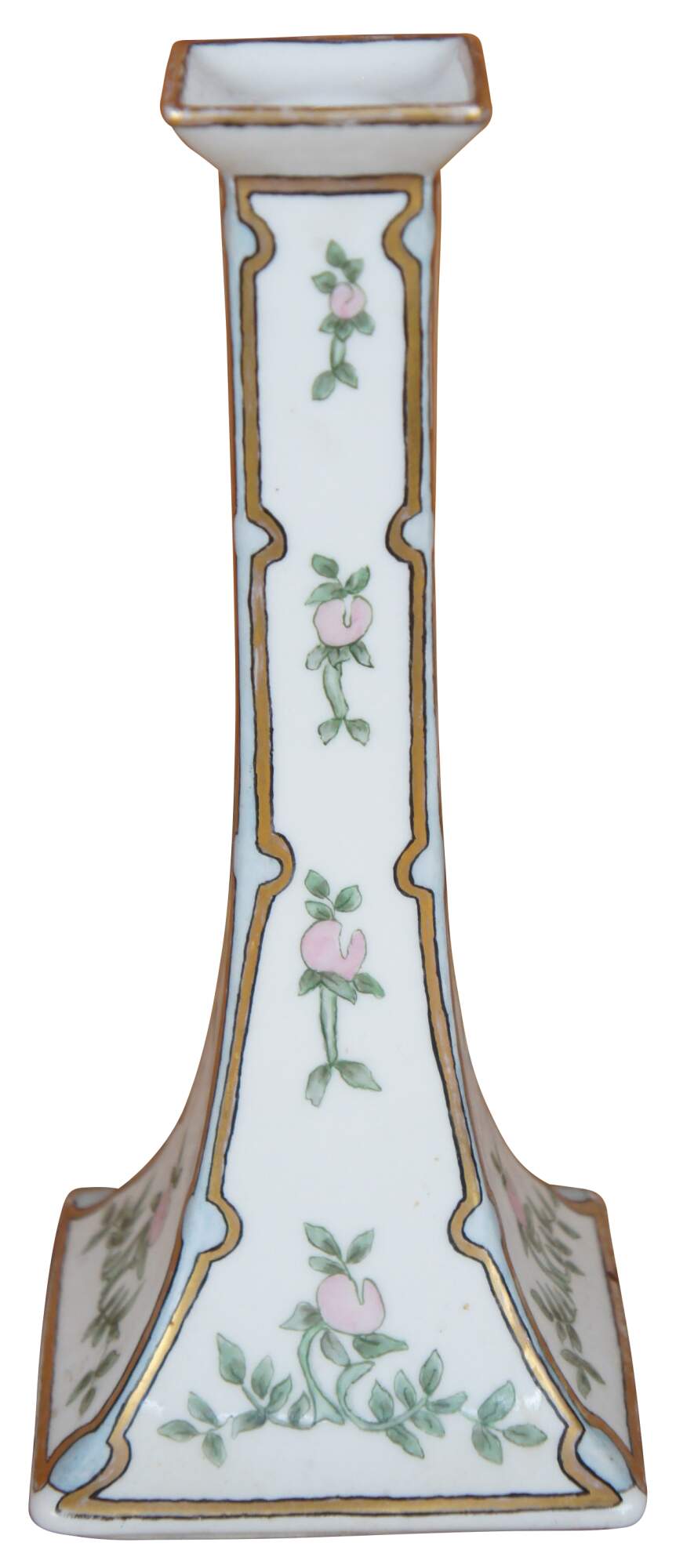
Shipping:
Free Shipping Included
Delivery:
Estimated 2-15 Business Days
Payments:
Credit Card, Check, Cash, PayPal, Apple Pay, Venmo
Returns:
30 Days 100% Money Back Guarantee, Buyer Pays Return Shipping
Description
Antique Bernardaud B & Co Limoges France porcelain hand painted candle holder featuring pink roses with gold trim. Circa early 1900s.
Bernardaud’s great industrial and artistic adventure began in 1863 in Limoges, a region possessing kaolin, fresh water and forests, which are all needed to make porcelain.
In the beginning ,in 1768, in Saint-Yrieix-La-Perche, a few dozen kilometers from Limoges, a woman discovered a very malleable type of white clay and decided to use it to bleach grease spots from her household linens. Later, experts would identify it as kaolin, one of the four ingredients used to make porcelain, along with feldspar powder, quartz and water. The Chinese had already been using kaolin for centuries to make porcelain that was remarkably robust, yet delicate with its own iridescent transparency. The saga of Limoges porcelain, in which the Manufacture Royale featured prominently, began in 1774. This was the historical and geographic context in which Bernardaud’s industrial adventure unfolded.
The story began in 1863, when two industrialists from Limoges opened a factory to meet increased demand for porcelain dinnerware services, burning coal for fuel and shipping their product to market via the newly built railroad. At the workshop, an apprentice by the name of Léonard Bernardaud stood out from the others. Twenty years later, he was promoted to head of sales and the founders made him a partner.
Léonard Bernardaud built up production capacity and opened up new markets, especially in the United States. He was succeeded by his sons Jacques and Michel, who survived the Great Depression and World War II by expanding the company’s collections, working with a number of artists. In 1949, they boldly introduced France’s first tunnel kiln, which operated 24 hours a day. At first, the tunnel burned city gas, instead of wood. After 1954, it used natural gas from Le Lacq in southwestern France, a ‘‘clean’’ energy that ensured constant heat and improved the firing process. The pieces produced were sturdier and free of defects, which represented a de facto increase in capacity. The company started to produce on an industrial scale, but continued to work according to the high standards of a craft based on artisan techniques.
Condition
Good antique condition, wear and distressing commensurate with age and use, wear to paint.
Dimensions
4" x 4" x 9"h
You May Also Like